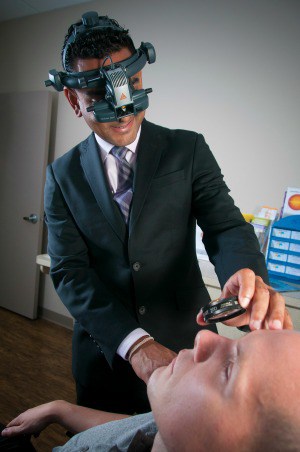Pterygium
A pterygium is a fleshy growth that infests the eye’s cornea. This occurs when the conjunctiva (a membrane that spreads over the white of the eye) grows into the cornea.
Pterygium normally takes place on the inner corner of the eye and may be little or can grow big enough to intervene with vision. It can affect one or both eyes and usually does not lead to anything severe such as a serious loss of vision or blindness.
This condition is more common in men than women and is more likely to occur in someone who spends a considerable amount of time in the sun. Other risk factors include:
- People who are frequently exposed to ultraviolet light (both UV-A and UV-B).
- People with a family history of the development of pterygia.
- There is a higher rate of pterygium in people living near the equator.
- Those who are frequently exposed to hot, dry, dusty, and windy conditions.
Pterygium
A pterygium is a fleshy growth that infests the eye’s cornea. This occurs when the conjunctiva (a membrane that spreads over the white of the eye) grows into the cornea.
Pterygium normally takes place on the inner corner of the eye and may be little or can grow big enough to intervene with vision. It can affect one or both eyes and usually does not lead to anything severe such as a serious loss of vision or blindness.
This condition is more common in men than women and is more likely to occur in someone who spends a considerable amount of time in the sun. Other risk factors include:
- People who are frequently exposed to ultraviolet light (both UV-A and UV-B).
- People with a family history of the development of pterygia.
- There is a higher rate of pterygium in people living near the equator.
- Those who are frequently exposed to hot, dry, dusty, and windy conditions.
How is a Pterygium treated?
A pterygium should be diagnosed and treated by a board-certified ophthalmologist. When the pterygium becomes red and aggravated, topical eye drops or ointments may be utilized to help scale down the redness. In more serious cases where the pterygium is big enough to endanger your sight, it can be surgically removed.
In a 30 minute procedure, the pterygium is lifted from the eye and cut away. The patient’s eye tissue is used to graft the area where the pterygium was. Stitches will be used and will later dissolve. After surgery, eye drops are used to help with healing and prevent infection. Strenuous activity is not recommended for up to one week after the procedure and full recovery is expected after one month.
If you are concerned about a growth on your eye it is important to seek medical attention to begin treatment and prevent further growth.
Lens Options
Over the last five years, cataract surgery has achieved remarkable new standards. Ophthalmologists are not only able to correct the cataract, but now are also able to correct one’s vision (such as Astigmatism, or Glasses). Lens options discussed prior to surgery will allow the patient to determine what he or she would like to achieve. The main purpose of these lenses is to achieve spectacle independence and provide a great range of vision without the need for glasses. These advanced technology lenses are able to offer patients convenience, comfort, and safety.
After Surgery
With the surgery, most patients will undergo a healing process. With the administration of eye drops, most patients will see better each day after surgery with clear, unobstructed vision appearing by day 7-14. Depending on your lens selection, you may not even require prescription eyeglasses! After the surgery, most patients are able to resume his or her normal activities within days.




